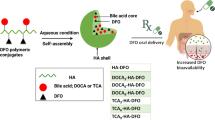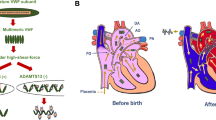Abstract
Stored red blood cells become deficient in nitric oxide that limits their ability to transfer oxygen to tissues that need it. The aims of this study are to assess the endogenous nitric oxide metabolites (NOx) and arginase I levels in transfusion-dependent β-thalassemic patients; to compare these levels in patients transfused with fresh RBCs with patients transfused with old RBCs, β-thalassemic minor patients, and normal control; and to correlate these levels with some clinical variables. Group I was composed of 23 patients with homozygous β-thalassemia on hypertransfusion regimen. They were adequately transfused with fresh RBC. Group II was composed of 17 patients with homozygous β-thalassemia on hypertransfusion regimen. They were adequately transfused with old RBCs. Group III was composed of 30 patients with homozygous β-thalassemia. They were adequately transfused with fresh RBCs. Group IV was composed of 18 patients with homozygous β-thalassemia. They were adequately transfused with old RBCs. Both group III and group IV were supposed to be on hypertransfusion regimen, but they did not follow the regimen. Group V was composed of 21 patients of β-thalassemia minor. Nineteen apparently healthy individuals (HbAA) served as a control group (group VI). In addition to routine laboratory investigations, plasma levels of NOx and serum levels of arginase I were assessed in all subjects. The mean values of plasma NOx were significantly decreased in groups III and IV compared to the other groups. Also, the levels of NOx were significantly decreased in patients who received old RBCs compared to the other groups. There were high serum levels of arginase I in groups III and IV compared to the other groups. There were significant negative correlations between plasma NOx and some hemolytic biochemical markers in groups III and IV. There were significant positive correlations between serum arginase I and some hemolytic biochemical markers in groups III and IV. Also, there was a significant negative correlation between plasma NOx and serum arginase I levels in groups III and IV. In non-adequately transfused patients with β-thalassemia major, inactivation of NO correlates with hemolytic rate and is associated with the erythrocyte release of cell-free hemoglobin, which consumes NO directly, and the simultaneous release of the arginine-metabolizing enzyme arginase, which limits bioavailability of the NO synthase substrate, arginine, during the process of hemolysis. New treatments aimed at improving arginine and NO bioavailability through arginase inhibition, suppression of hemolytic rate, oral arginine supplementation, predonation testing, and transfusion of fresh RBCs or use of NO donors represent potential therapeutic strategies for this common hemolytic disorder.

Similar content being viewed by others
References
Giardina P, Hilgartner M (1992) Update on thalassemia. Pediatr Rev 13(2):55–62
Piomelli S, Karpatkin M, Arzanian M, Becker M, Genesier N, Danoffs SJ et al (1974) Hypertransfusion regimen in patients with Cooley's anemia. Ann NY Acad Sci 232:186
Propper RD, Button LN, Nathan DG (1980) New approach to the transfusion management of thalassemia. Blood 55:55–58
Morris S (2002) Regulation of enzymes of the urea cycle and arginine metabolism. Annu Rev Nutr 22:87–105
Morris S, Bhamidipati D, Kepka-Lenhart D (1997) Human type II arginase: sequence analysis and tissue-specific expression. Gene 193:157–161
Kim P, Iyer R, Lu K et al (2002) Expression of the liver form of arginase in erythrocytes. Mol Genet Metab 76:100–110
Ignarro L (1989) Heme-dependent activation of soluble guanylate cyclase by nitric oxide: regulation of enzyme activity by porphyrins and metalloporphyrins. Semin Hematol 26:63–76
Moncada S, Higgs A (1993) The L-arginine-nitric oxide pathway. N Engl J Med 329:2002–2012
Reynolds J, Ahearn G, Angelo M, Zhang J, Cobb F, Stamler J (2007) S-nitrosohemoglobin deficiency: a mechanism for loss of physiological activity in banked blood. Proc Natl Acad Sci USA 104:17058–17062
Tsikas D (2005) Nitric oxide measurement in biological fluid. Free Radic Res 39:797
Bennett-Guerrero E, Veldman T, Doctor A, Telen M, Ortel T, Reid T, Mulherin M, Zhu H, Buck R, Califf R, McMahon T (2007) Evolution of adverse changes in stored RBCs. Proc Natl Acad Sci USA 104(43):17063–17068
Rund D, Rachmilewitz E (2005) Beta-thalassemia. N Engl J Med 353:1135–1146
Bonaventura J (2007) Clinical implications of the loss of vasoactive nitric oxide during red blood cell storage. Proc Natl Acad Sci USA 104(49):19165–19166
Morris C, Kuypers F, Kato G et al (2005) Hemolysis-associated pulmonary hypertension in thalassemia. Ann NY Acad Sci 1054:481–485
Vichinsky E (2004) Pulmonary hypertension in sickle cell disease. N Engl J Med 350:857–859
Hagar R, Morris C, Vichinsky E (2006) Pulmonary hypertension in thalassaemia major patients with normal left ventricular systolic function. Br J Haematol 133(4):433–435
Bayraktar N, Erkurt M, Aydogdu I, Basaran Y (2008) The levels of nitric oxide in betathalassemia minor. Turk J Haematol 12:1324
Azizi E, Dror Y, Wallis K (1970) Arginase activity in erythrocytes of healthy and ill children. Clin Chim Acta 28:391–396
Morris C, Kato G, Poljakovic M et al (2005) Dysregulated arginine metabolism, hemolysis-associated pulmonary hypertension and mortality in sickle cell disease. JAMA 294:81–90
Wu G, Morris S (1998) Arginine metabolism: nitric oxide and beyond. Biochem J 336:1–17
Morris C (2006) New strategies for the treatment of pulmonary hypertension in sickle cell disease: the rationale for arginine therapy. Treat Respir Med 5(1):31–45
Morris C, Singer S, Walters M (2006) Clinical hemoglobinopathies: iron, lungs and new blood. Curr Opin Hematol 13(6):407–418
Zakynthinos E, Vassilakopoulos T, Kaltsas P et al (2001) Pulmonary hypertension, interstitial lung fibrosis, and lung iron deposition in thalassaemia major. Thorax 56(9):737–739
Piatti G, Allegra L, Fasano V et al (2006) Lung function in beta-thalassemia patients: a longitudinal study. Acta Haematol 116(1):25–29
Zharikov S, Block E (2000) Association of L-arginine transporters with fodrin: implications for hypoxic inhibition of arginine uptake. Am J Physiol Lung Cell Mol Physiol 278:L111–L117
Xia Y, Dawson V, Dawson T et al (1996) Nitric oxide synthase generates superoxide and nitric oxide in arginine-depleted cells leading to peroxynitrite- mediated cellular injury. Proc Natl Acad Sci 93:6770–6774
Reiter C, Wang X, Tanus-Santos J et al (2002) Cell-free hemoglobin limits nitric oxide bioavailability in sickle cell disease. Nat Med 8:1383–1389
Kato G, Onyekwere O, Gladwin M (2007) Pulmonary hypertension in sickle cell disease: relevance to children. Pediatr Hematol Oncol 24:159–170
Morris C, Gladwin M, Kato G (2008) Nitric oxide and arginine dysregulation: a novel pathway to pulmonary hypertension in hemolytic disorders. Curr Mol Med 8(7):620–632
Naithani R, Chandra J, Bhattacharjee J, Verma P, Narayan S (2006) Peroxidative stress and antioxidant enzymes in children with beta-thalassemia major. Pediatr Blood Cancer 46(7):780–785
Ogino K, Takahashi N, Takigawa T, Obase Y, Wang D (2011) Association of serum arginase I with oxidative stress in a healthy population. Free Radic Res 45(2):147–155
Kim-Shapiro DB, Lee J, Gladwin MT (2011) Storage lesion: role of red blood cell breakdown. Transfusion 51(4):844–851
Donadee C, Raat NJ, Kanias T, Tejero J, Lee JS, Kelley EE, Zhao X, Liu C, Reynolds H, Azarov I, Frizzell S, Meyer EM, Donnenberg AD, Qu L, Triulzi D, Kim-Shapiro DB, Gladwin MT (2011) Nitric oxide scavenging by red blood cell microparticles and cell-free hemoglobin as a mechanism for the red cell storage lesion. Circulation 124(4):465–476
Author information
Authors and Affiliations
Corresponding author
Rights and permissions
About this article
Cite this article
El-Hady, S.B.M., Farahat, M.H., Atfy, M. et al. Nitric oxide metabolites and arginase I levels in β-thalassemic patients: an Egyptian study. Ann Hematol 91, 1193–1200 (2012). https://doi.org/10.1007/s00277-012-1427-0
Received:
Accepted:
Published:
Issue Date:
DOI: https://doi.org/10.1007/s00277-012-1427-0




